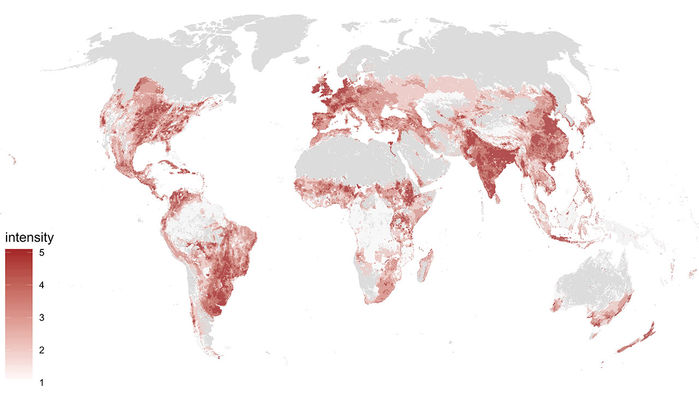
Mapping global manure resources will help farmers gain access to phosphorus, a finite and unevenly distributed resource used to make fertilisers.
The world’s recoverable reserves of phosphate rocks — from which fertilisers are produced — are finite and unevenly distributed.
Farmers rely on phosphorus fertilisers to enrich the soil and ensure bountiful harvests.
But researchers have now showed that there are significant untapped opportunities for recycling the essential mineral.
Steve Powers, an associate researcher at Washington State University who conceived of the study, is now trying to figure out exactly how much phosphorus can be recaptured from animal and human waste.
He hopes, with the help of the Stevens Institute of Technology based in New Jersey, to identify other opportunities for more efficient phosphorus use.
“If we can recycle more of this locally available waste phosphorus back into agriculture, we might be able to keep it away from leak points while reducing our dependence on future fertiliser imports and mining,” Powers said.
Research shows that at least five times as much phosphorus is contained in animal manure as human waste, suggesting that livestock operations are an abundant target for recycling efforts.
Almost half of the world's farmlands - about 12 percent of the planet's landmass - are co-located with manure-rich livestock operations.
This suggests that in many regions manure could be applied to fields directly, or processed using bio-digesters to extract phosphorus for efficient and economical transport to farms.
In the April 2019 issue of Earth's Future, David Vaccari, director of the Stevens Institute's department of civil, environmental and ocean engineering, identified regional 'hot spots' where there's both significant demand for fertilisers, and significant potential for recapturing phosphorus from animal and human waste.
“Ideally, the 45 million metric tons of phosphorus fertilizers each year would be completely reused, and we'd harvest their maximum potential to support food production,” said Vaccari. “This work is a step towards understanding how to get to that point.”
